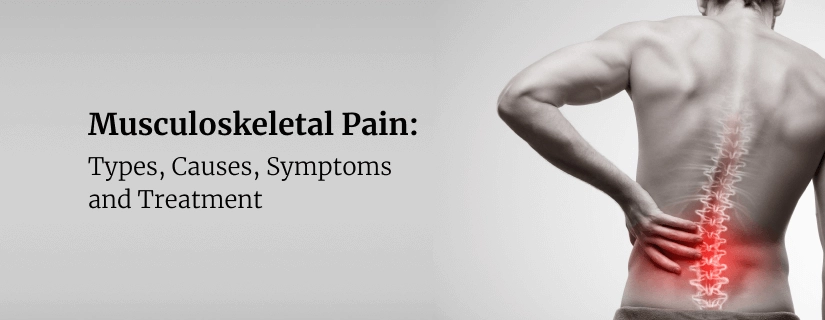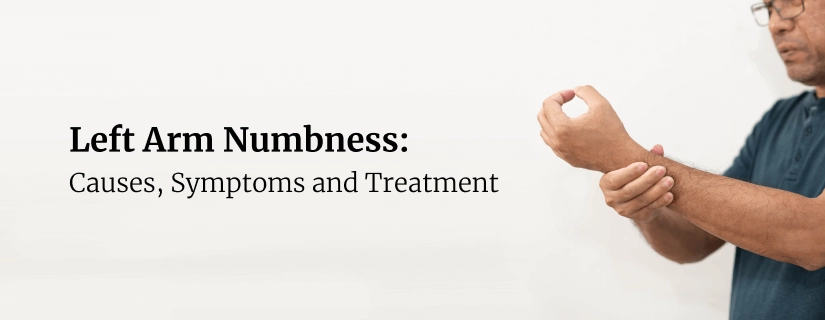Musculoskeletal pain affects millions worldwide, causing discomfort and limiting daily activities. This common health issue can strike anyone, from office workers to athletes, and it often profoundly impacts the quality of life. Understanding the symptoms and treatments of musculoskeletal pain is crucial for those seeking relief. This article explores the causes of musculoskeletal pain, how doctors diagnose it, and the various options for musculoskeletal pain treatment.
What is Musculoskeletal Pain?
Pain in the musculoskeletal system refers to acute or chronic pain affecting the bones, muscles, ligaments, tendons, and nerves. It is a common medical and socioeconomic issue worldwide.
Musculoskeletal pain is primarily somatic in nature, meaning it originates from the musculoskeletal system. However, it can coexist with other pain syndromes, such as neuropathic (nerve-related) or visceral (organ-related) pain.
The pain can be localised, affecting a specific area of the body, or widespread, affecting the entire body. It can be acute, sudden, and severe or chronic, lasting for an extended period.
Types of Musculoskeletal pain
Musculoskeletal disorders symptoms can manifest in various forms, affecting different body parts. The most prevalent types include:
- Muscle Pain (Myalgia): This refers to severe pain in the muscle tissues that connect bones and organs. Causes range from muscle injury, infection, overuse, cramps or spasms, tension, loss of blood flow to the muscle, illness, certain medications, or tumours.
- Bone Pain: Often described as deep, penetrating, or continuous pain. Trauma from fractures or injuries is a common cause of bone pain. However, it can also stem from injury, infections, fractures, osteoporosis, tumours spread into the bone, or other systemic illnesses.
- Tendon and Ligament Pain: This pain often manifests as acute, sharp pain and results from sprains, strains, or inflammation caused by tendinitis or tenosynovitis. Ligaments connect bones to bones. Tendons are the connection between muscles and bones.
- oint Pain (Arthralgia): Typically characterised by aching and can be caused by arthritis (osteoarthritis and rheumatoid arthritis), bursitis, or other inflammatory conditions. Joint pain can occur with swelling, stiffness, and limited range of motion.
- Fibromyalgia: This condition causes widespread pain in tendons, muscles, and joints throughout the body. It may start with localised pain in the neck and shoulders but become more widespread over time, often accompanied by fatigue, sleep disturbances, and mood issues.
- Nerve Compression Pain: Conditions that pressure nerves, such as carpal tunnel syndrome, cubital tunnel syndrome, sciatica, and tarsal tunnel syndrome, can result in nerve compression pain. It can be sharp, burning, or shooting pain along the course of a nerve.
Causes of Musculoskeletal Pain
Musculoskeletal pain can arise from various causes, ranging from injuries to underlying health conditions. The most common causes include:
- Trauma: Fractures, joint dislocations, direct blows to muscles, bones, or joints, and sprains
- Overuse Injuries: Poor posture, prolonged bed rest, or excessive physical exertion
- Arthritis: Conditions like rheumatoid arthritis and osteoarthritis can cause chronic musculoskeletal pain.
- Infections: Infections of the bones, muscles, or other soft tissues
- Tumours and Cancers: Certain tumours and cancers that spread to the bone can cause musculoskeletal pain.
Referred Pain: A type of pain perceived in a location different from the source, such as jaw pain from a heart attack or pain in the shoulder blade due to a ruptured spleen.
Symptoms of Musculoskeletal Pain
Musculoskeletal pain can manifest in various ways, and the symptoms may depend on the root cause. Common symptoms include:
- Constant aching and stiffness, particularly after waking up in the morning or long periods of inactivity
- Inflammation or swelling in the affected area
- Burning sensations along the course of the nerve
- Fatigue
- Muscle spasms or cramps
- The area may be sensitive to touch or pressure
- Difficulty moving the affected part of the body and pain worsens with movement
- Reduced strength in the affected muscles or joints
- Sleep disturbances


